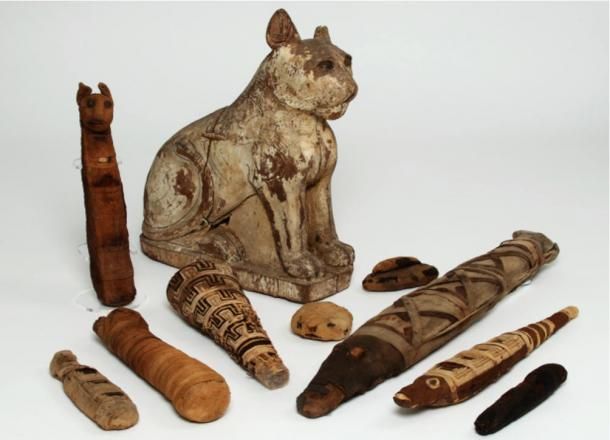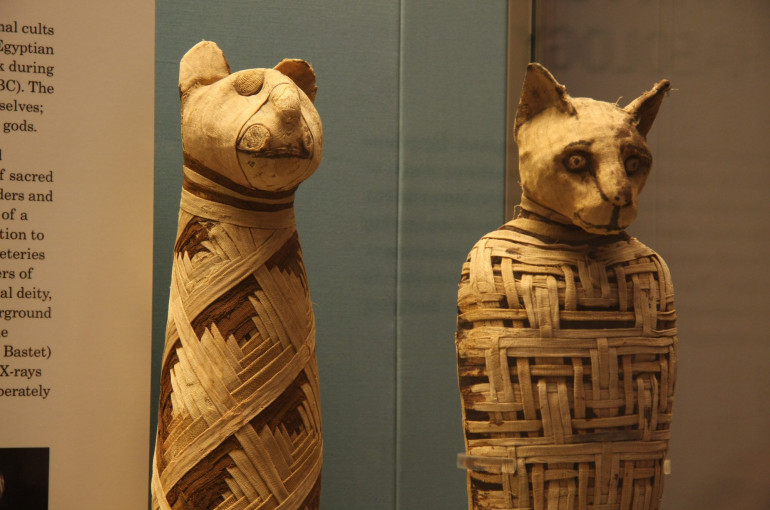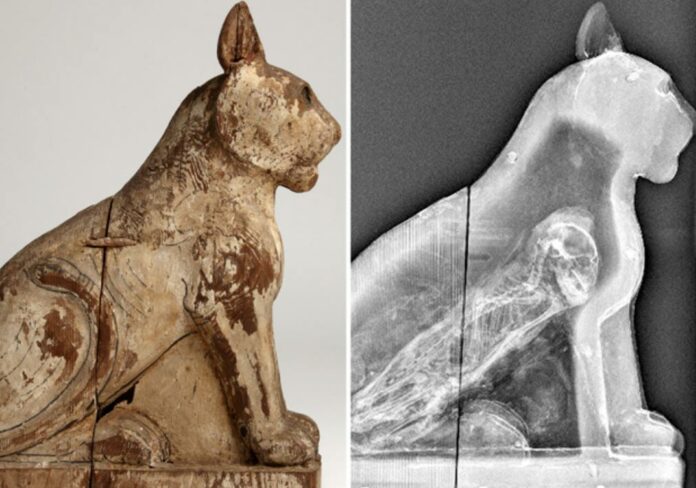In a groundbreaking discovery that uncovers a hidden facet of ancient Egyptian practices, a staggering 70 million mummified animals have been unearthed in Egypt’s underground catacombs. This revelation, considered Egypt’s “dark secret,” includes a variety of creatures such as cats, birds, rodents, and even crocodiles. However, recent investigations have exposed surprising truths about these animal mummies, many of which were found to be empty. This discovery sheds light on the extent and nature of the ancient animal mummification industry.
The Discovery and Its Implications

In 2015, a team of radiographers and Egyptologists from the University of Manchester conducted a monumental survey of animal mummies using state-of-the-art medical imaging technology. The team scanned hundreds of elaborately-prepared animal mummies collected from over thirty sites across Egypt. This research, featured in the BBC program Horizon: 70 Million Animal Mummies: Egypt’s Dark Secret, represents the largest survey of its kind in history.
The scans, which utilized CT and X-ray technology, focused on 800 mummies dating from 1000 B.C. to 400 A.D. The findings revealed that approximately one-third of these mummies did not contain any animal remains at all. Instead, many were filled with non-animal materials such as mud, sticks, reeds, and eggshells. This unexpected discovery has led researchers to question the practices and motivations behind the extensive animal mummification industry in ancient Egypt.
The Ancient Egyptian Mummification Industry

The ancient Egyptians revered various animal deities, believing that mummified animals were sacred offerings to the gods. This religious practice was highly popular, resulting in an immense demand for mummified creatures. Dr. Lidija McKnight, the research leader from the University of Manchester, noted that the high volume of mummies and the extensive efforts involved in their preparation suggest a thriving industry.
McKnight explained, “You’d get one of these mummies and you’d ask it to take a message on your behalf to the gods and then wait for the gods to do something in return.” This practice highlights how deeply ingrained animal mummification was in the ancient Egyptian religious system. The sheer scale of the industry is illustrated by the discovery of around two million mummified ibis birds and up to eight million mummified dogs in various catacombs.
Revealing the Hidden Truth

The scans revealed some startling findings. For instance, a five-foot-long crocodile mummy contained eight baby crocodiles, carefully prepared and bound together with the mother. Additionally, some cat-shaped mummies held only a few cat bones, while others contained no animal parts whatsoever. Instead, they were filled with symbolic materials that were considered special in their own right.
Experts believe that the high demand for mummified animals may have led to the production of “fake” mummies to meet the needs of pilgrims and worshippers. This practice might have allowed embalmers to profit from selling mummies that did not contain the promised animal remains. Despite these revelations, some scholars argue that the elaborate preparation of even the symbolic mummies demonstrates the sacred nature of these offerings.
Conclusion
The discovery of 70 million mummified animals in Egypt uncovers a complex and previously hidden aspect of ancient Egyptian religious practices. The findings not only challenge our understanding of the animal mummification industry but also offer valuable insights into the ancient Egyptians’ beliefs and rituals. As the BBC program 70 Million Animal Mummies: Egypt’s Dark Secret airs, it will undoubtedly provoke further discussions and inquiries into this fascinating and enigmatic aspect of ancient history. The preserved offerings serve as time capsules, providing a glimpse into the ancient techniques and the intricate relationship between religion, life, and death in ancient Egypt.
